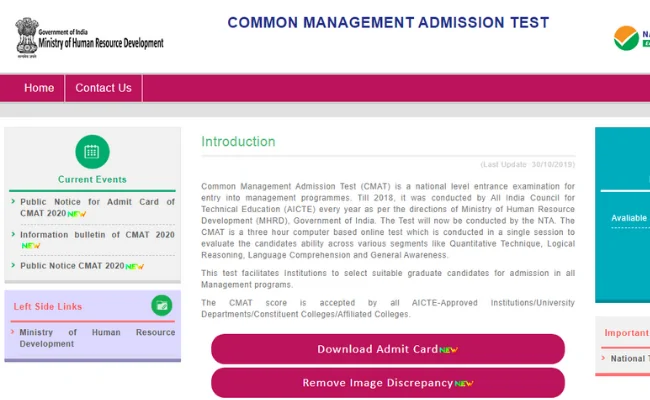
MBA aspirants, while preparing for any entrance exam, hope to get 98+ percentile in the tests. Consequently, that is the kind of percentile that the best MBA colleges look for while shortlisting the applicants.
CMAT, like other management entrance tests, is a national level exam that many MBA aspirants undertake to get shortlisted for the best MBA institutes. However, to secure a 98+ percentile in CMAT, one has to obtain 300+ marks out of the total 400 marks. So how does one score 300+ marks in CMAT 2020?
CMAT 2020 Sections
The questions in the CMAT 2020 will be associated with four topics. These are:
- Quantitative Techniques and Data Interpretation
- Logical Reasoning
- Language Comprehension
- General Awareness
Each section will carry 25 questions and 100 marks, making all the sections equally important.
How to Secure 300+ Marks?
Now that you have a target, your preparation strategy must revolve around on how to achieve this target.
Make your basics Strong– The focus on the first stage of preparation should be on getting the basics stronger. You will be able to solve difficult questions easily if your concepts are clear. Attempt the previous years’ papers to determine your strong and weak areas. If you have a target score, you can only get a few questions wrong.
Strong vs Weak Sections– A candidate can try to convert the weak section into a stronger one. For example, if you find the LR section troublesome to solve, then you can take sectional mock tests. It will help you to practice more and will also make you understand the pattern better. All the sections should seem strong to you if you are targeting a 300+ score.
Importance of Mock Tests– Ever heard a topper saying “I have never taken a mock test”? Hardly ever. That is because mocks helps you prepare better for the exam. The mocks assess your level of preparation and the analysis of mock tests will tell you what you are lacking for achieving the 300+ score.
Short Tricks for Quant– Time management is equally important when it comes to a competitive exam like CMAT. To attempt four sections in 3 hours can be difficult for many candidates. Learning short tricks for various quant problems can help increase the speed of solving questions. With several tricks, you will be able to solve some quant questions under 30 seconds.
GK Section– The General Awareness section becomes the percentile deciding factor when it comes to CMAT. Many candidates will find it difficult to keep pace with all events of national or international importance happening around his/ her surroundings. Try to make it a habit to read newspapers every day since the day you begin your preparation. Reading newspapers like The Hindu, The Indian Express or The Times of India will not only keep you updated with the current affairs but also improve your vocabulary for the Language Comprehension section.
Stay connected with fellow students on PaGaLGuY for CMAT 2020 Exam
Syllabus for CMAT 2020
Since there is no prescribed syllabus for CMAT, all applicants will have to be ready with all the sub-topics related to the sections. The syllabus is subject to change with the type of questions asked in CMAT every year. However, the candidates can look into the prescribed syllabus of other MBA exams which includes the aforementioned sections. The following is the expected syllabus of CMAT 2020.
Quantitative Techniques and Data Interpretation
- Arithmetic
- Probability
- Geometry
- Algebra
- Derivatives
- Tables
- Bar Diagrams and Graph
- Charts (Pie Chart)
Logical Reasoning
- Blood Relation
- Logical Puzzles
- Numerical Puzzles
- Venn Diagram
- True/false statements
- Visual Reasoning
- Statements
Language Comprehension
- Reading Comprehension Passages
- Test of Grammar
- Test of Vocabulary
- Para-jumbles
- Tenses
- Usage of Articles
- Non-finite
- Dangling Modifiers and related
General Awareness
- Recent events of National Importance
- Recent events of International Importance
- Sports
- Awards
- Books and Authors
- Economics (Current Affairs and Basic)
- History
- Conventional GK
